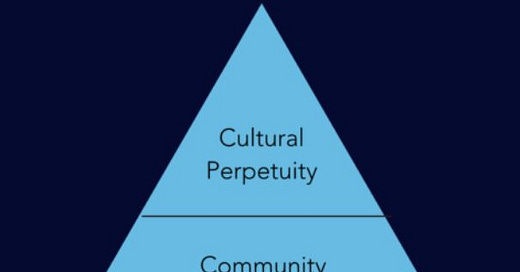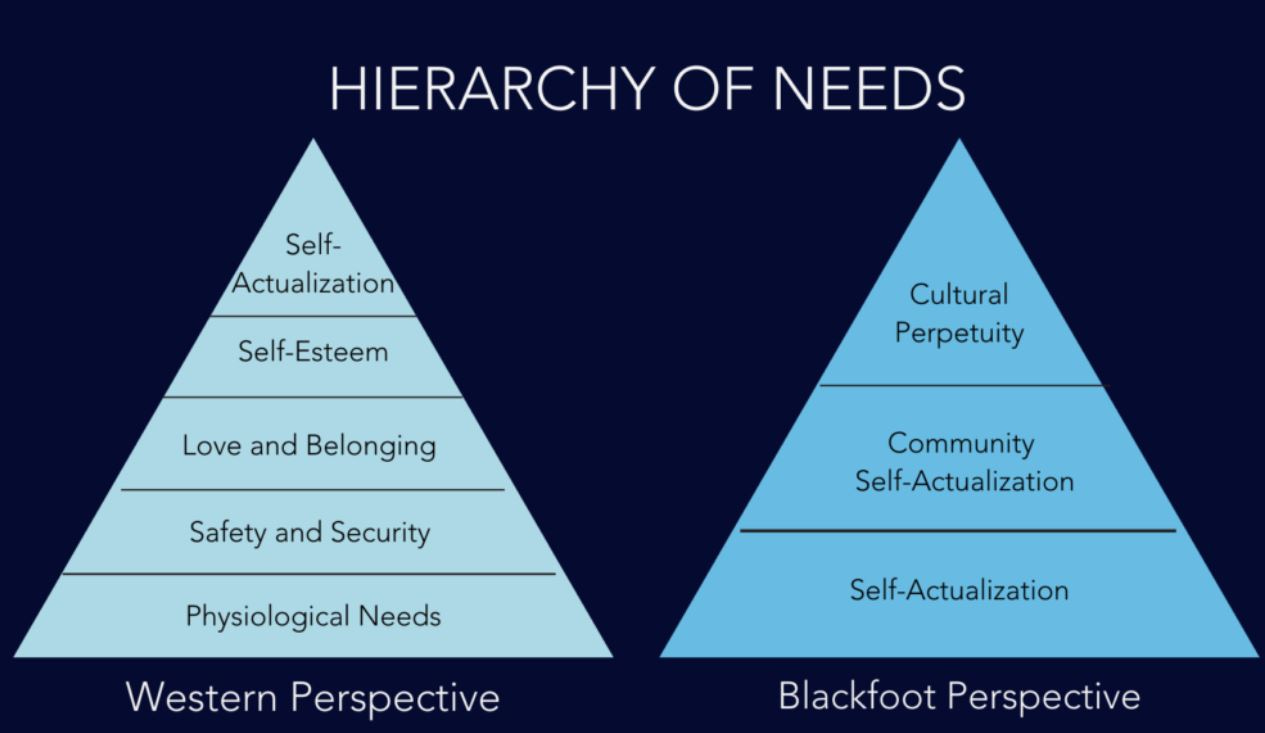Image Source: https://tribalhealth.com/maslow-hierarchy/
For Canadians June is National Indigenous History Month. It is a period when we need to learn about the rich history of the First Nations, Inuit and Metis people and to celebrate their cultures, traditions and experiences. The relationship between settler society and indigenous people in Canada is special and provides an opportunity for the continued evolution of a unique Canadian identity and culture.
Settler society has assumed a cultural superiority over the indigenous people when they discovered the land that is now North America and Canada. This assumption was the basis for imposing European cultural norms and presuming indigenous people were primitive and had generally had no inherent rights.
Once Canada was created, and the Numbered Treaties negotiated, these beliefs of superiority ultimately lead to the confiscation of land from indigenous people and the subversion of their rights. Lost in the history has been the opportunity to learn and to understand how in many ways indigenous culture was in fact the more advanced and superior.
Over the past several centuries the accumulation of wealth including property has been celebrated in settler society and those less advantaged are presumed to be less worthy. This creates societies where there is great disparity in wealth and the development of different classes of people which is often the source of conflict and unrest. Moreover, with uneven wealth distribution the basis for a democratic form of government is undermined and often evolves into an oligarchy and the rich and privileged classes hold power over the majority and prioritize their own interests over the common good.
The accumulation of wealth and status is so ingrained into the social norms of settler society that it is considered to be “natural’. The famous American psychologist Abraham Maslow created a concept of the Hierarchy of Needs which suggested that people pursue the gratification of different levels of need until they are able to then focus their energy on the end development of self-actualization.
Maslow differed from other psychologists in that he focused on the study of healthy individuals instead of people with serious psychological issues. He focused on self-actualizing people. Self-actualizing people indicate a coherent personality syndrome and represent optimal psychological health and functioning. However, Maslow also focused on individuals and based his thoughts on self-actualization on historical figures who had achieved great things like Albert Einstein. Maslow does not give due consideration to the impact of culture on how people may be motivated but rather thinks of motivation as being driven from some sort of natural internal forces.
Maslow used the term meta-motivation to describe self-actualized people who are driven by innate forces beyond their basic needs, so that they may explore and reach their full human potential. Maslow's theory of motivation gave insight on individuals having the ability to be motivated by a calling, mission or life purpose.
Notwithstanding the power of his theories in explaining human behaviour Maslow assumes a paradigm where self-actualization is an individual pursuit and an end goal. His thoughts reflect liberal ideology that places the individual at the center of society.
It is interesting to note that prior to publishing his theories on the Hierarchy of Needs, Maslow spent six weeks in 1938 with the Blackfoot Nation in Alberta learning about their culture. The experience was transformational, but he did not pass on specific learnings regarding the profound effect Blackfoot culture had on the creation of wealth. To the point where in Blackfoot society, as well as in many other indigenous cultures found in North America, wealth did not mean the accumulation of property and material things but rather was the product of being able to contribute to the greater community.
His findings from his time with the Blackfoot included the following1:
Cultural Wealth Paradigm
80-90% of Blackfoot members possessed self-esteem qualities found in only 5-10% of his own population
Wealth meant giving possessions away, not accumulating them
Community status came from generosity, not individual achievement
The Giveaway Ceremony
Maslow witnessed community members publicly give away all their possessions
Those with the most gave the most to those in greatest need
Self-actualization wasn't earned—it was the foundation of community life
Inverted Worldview
Blackfoot philosophy places self-actualization at the base of the levels of human needs, not the top
Individual fulfillment supports community actualization
People arrive "already actualized"—community helps them stay that way
The Blackfoot didn't see human needs as a ladder to climb. Self-actualization was the foundation supporting everything above. Certainly, Maslow discovered that Indigenous communities had sophisticated frameworks for human development. Undoubtedly this helped him shape his thoughts on individual development. However, he does not emphasize the role of community and likely did not give credit to the Blackfoot for helping him frame his concepts precisely because their social values ran counter to predominant Western political ideology that believes in the accumulation of things over the common good. In fact, in settler society the sharing of goods and property in a community is often considered antithetical to core social values. It is why in 1885 under the Indian Act give-away ceremonies like the Potlach practised by people on the Pacific coast were outlawed and suppressed. In part the motivation for trying to eliminate these practices was to eradicate indigenous culture. However, these particular ceremonies were seen as threats to the social values of the settlers and had to be eliminated.
Potlatches serve a variety of purposes, including celebrating births, marriages, deaths, and the building of new homes. They are also used to bestow names, reaffirm social status, and settle disputes. They also involved feasting, dancing, singing, and the distribution of gifts, like blankets, carvings, or food.
The inability, in the past, to understand the validity of alternative cultural norms and to see the benefits we collectively could garner from the sharing of ideas and experiences, lead to the ironic approach by the early 20th century Canadian government to ban give-away ceremonies because they consider them to be barriers to the “civilization” of indigenous people. It is unfortunate that we tend to minimize the positive impact an ideology that values contribution to the overall well-being of the community over the individual accumulation of material things, could have on improving our society. Think of ultra-wealthy people like Bill Gates or Warren Buffet who both have arrived at the realization that their greatest acts will be giving away all their money to people who need it more. For the Blackfoot, Kwakwaka'wakw, Nuu-chah-nulth, Coast Salish, and Dene peoples this revelation is and has always been foundational to what they value most in remaining a healthy person living in a healthy society.
We can learn a lot from the history of the indigenous people if we are willing.
Thanks to Eric Arzubi MD who shared these revelations on LinkedIn. See https://www.linkedin.com/posts/drzoobs_abraham-maslows-famous-hierarchy-of-needs-activity-7332769457552965633-ouMM/?utm_source=share&utm_medium=member_ios&rcm=ACoAAABfTpoBZl9pMk4fN4eyIEVJFa_j8ifP27A




